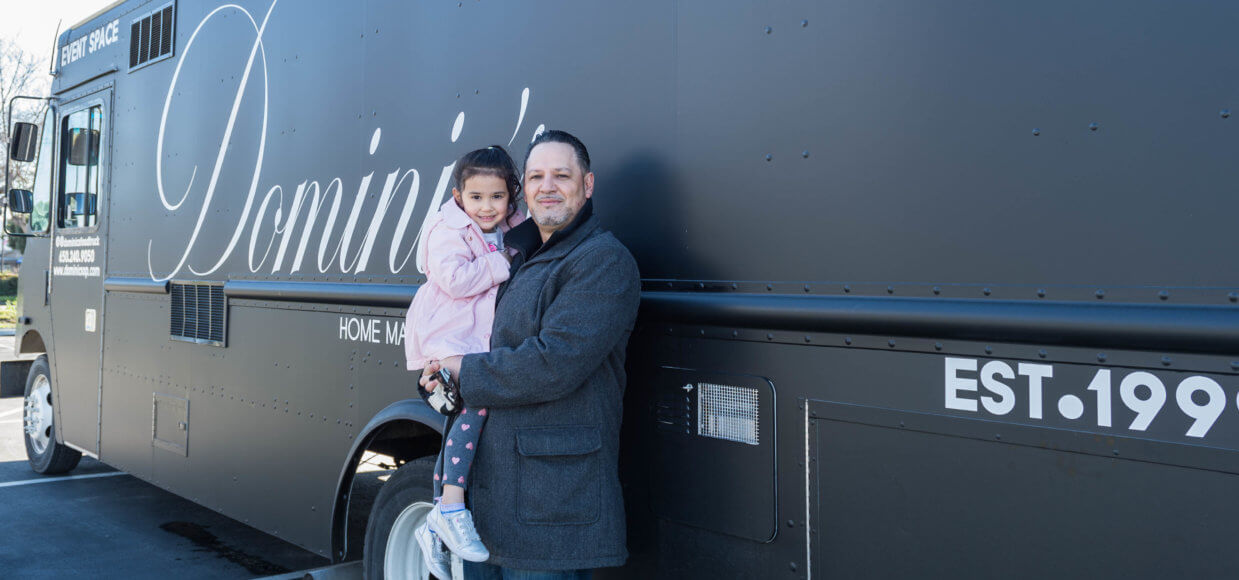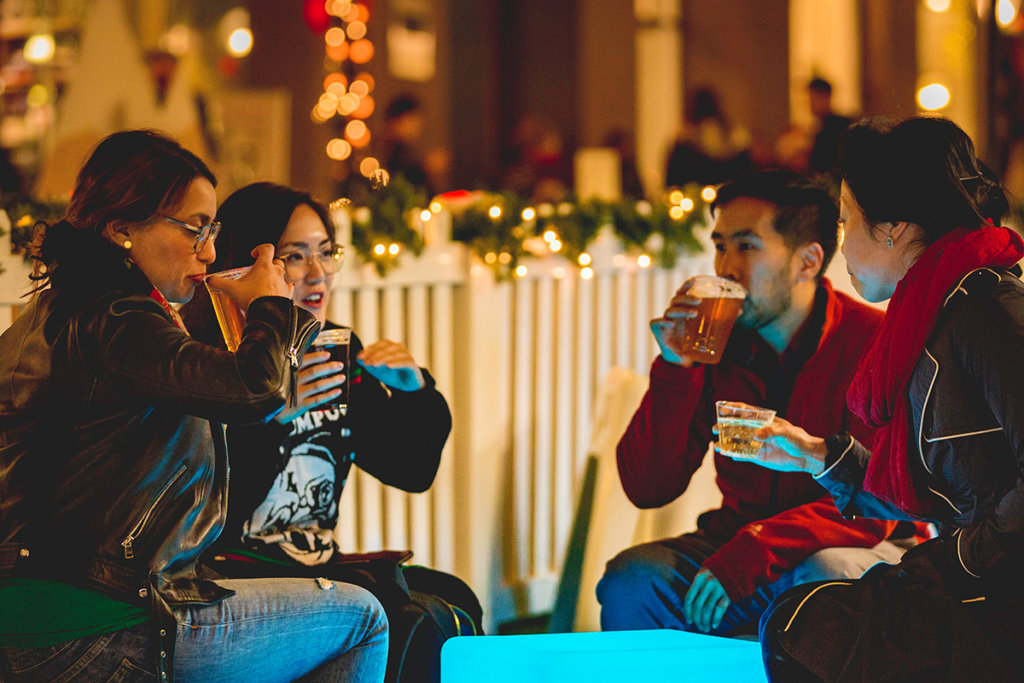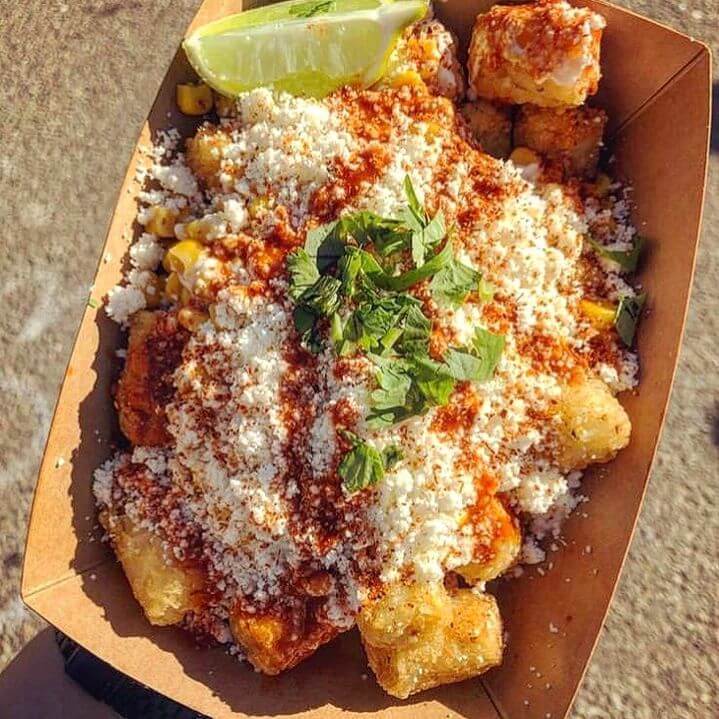
If this past year’s litany of shutdowns, reopenings, and endless pivots have proven one thing, it’s this—the food industry is extraordinarily creative, resourceful, and resilient.
The pandemic has ushered in a new era of dining defined by takeout, parklets, ghost kitchens, cloud kitchens, social-media-based popups, and emergency food relief. If you didn’t shut down entirely, you adapted your business or opened a new business—or both. The strategy and approach seem to be all over the place.
Some permanent spots that turned popup are opting to remain mobile, claiming that they’re done with the stress and overhead of operating brick and mortar restaurants in the Bay Area. Some restaurants are trying to save their flailing businesses by going mobile with a food truck. Meanwhile, a number of longtime popups and food trucks are retiring their mobile businesses and graduating to permanent establishments, with a handful of expansions or new openings announced each week.
The amount of movement, change and emerging trends is dizzying. The pace is fast. What will last remains unknown. The whole thing has us wondering—is now actually a good time to start a new food business? The answer depends on who you ask.
What’s working in this new food landscape (and what’s not) still remains to be seen.
Curtis Lam, owner of popular food truck the Chairman, summed it up best for us: “Everyone is just throwing ideas up on the wall and seeing what sticks.” Sounds about right.
Curtis and his team made headlines last month when they announced the Chairman would be parking its mobile business downtown with a permanent location in Hawker Alley in downtown San Francisco. Like many food vendors suffering from more limited routes, Curtis has tried a variety of ways to reinvent himself to stay afloat.
In addition to adding menu items—like a deep-fried chicken sandwich and build-it-yourself bao kits for assembling at home—last year he opened Good Gais, a takeout window that does gingery chicken and rice. He also has a ghost kitchen in the Bayview for delivery and plans to add another shared-kitchen, kiosk-and-delivery thing in the Richmond district.
“We know we’re taking a risk in all these situations, but I think now is the time to take a risk,” he told us. “I anticipate this will be the year to rebuild and next year will be the year to get back to normal.” Splitting expenses with other brands in these shared kitchen spaces, he said, seems like the best way to go for now. “It’s our best attempt at survival,” he added.
For bigger, more established brands it might not be enough to simply run one business anymore.
Like the Chairman, most established food businesses are operating two, three or more different kinds of businesses within their core line to make ends meet.
Dominic’s at Oyster Point owner Chris DeGrand—who said he swore that he’d never open a food truck—launched its first food truck over the summer last year to, as he put it, “plug the holes of this sinking ship.”
A beloved and well respected family-owned restaurant company that has been operating for over 34 years with multiple restaurant locations and a successful catering arm, Dominic’s struggled to keep its doors open and loyal staff employed last year. So, Chris said, he did some research, talked to Ray over at Da Poke Man, and decided to open a “restaurant on wheels” to give the brand a fresh start with a mobile arm.
At first, Chris said he didn’t know where to take the truck, but slowly started finding spots to pop up here and there and expand the reach of his businesses. “Opening a food truck is just as much work as opening a restaurant, but I think it’s a worthwhile investment,” Chris said. “It may take us two year or 10 years, but I really think the truck will pay us back on our investment.”
The trend of operating multiple businesses within a business has become almost essential for fine dining restaurants to stay alive.
Many of which have turned into ghost kitchens, opened takeout windows, experimented with their own pop-up concepts, and taken on entirely new business models by partnering with emergency food relief efforts.
San Francisco’s Nightbird—previously known for its inventive 10-course dining menu—got into the takeout game by hawking a fully-loaded double cheeseburger from a pickup window peeking out of the boarded up walls once boasting a bustling restaurant in Hayes Valley. Behind closed doors, chef and owner Kim Alter is busy running a daily meal prep and delivery operation through partnerships with a number of organizations to feed people reeling from the pandemic. She also runs a restaurant consulting business on the side.
“We’re just kind of doing a little bit of everything to keep the lights on while we wait and see what happens,” Kim said. She added that people who work in restaurants are scrappy, adaptable, and accustomed to thinking on their feet. And while this is the greatest challenge she or any of her restaurant colleagues have ever experienced, the resilience of the industry as a whole is remarkable, she noted.
For her, now’s not the time to take a risk with something new. While she had plans on expanding her restaurant, Kim said she would now rather wait and see how this year pans out. “So many of my friends have lost so much money that was poured into new concepts with all the sudden such downs and changes, that it just makes me nervous,” she told us.
Despite the uncertainty, a number of notable new restaurants are opening their doors this year. Many, like Californios, are building takeout and outdoor dining into their basic concepts, as one would expect. While others, like La Pearla in Oakland, are preparing for a full return to normalcy with space for things like music and dancing.
Even Anthony Strong, who was forced to close his restaurant Prairie in light of the pandemic and “swore off” the traditional restaurant business altogether, told us that he’s planning on getting a restaurant going again. He has been having a blast serving up a private dining menu through what’s technically a catering business on his glammed up VW van “Stella.” This little side hustle has been not only fun, but also lucrative.
Taking a risk in the food business isn’t new—but being prepared to adapt quickly is critical to survival.
Olha Ivanchenko, co-owner of newcomer El Fuego food truck, is the first to say perseverance and quick thinking are what it takes to make it as a new business right now—and she would know. Olha and her husband launched their brand new food truck in a prime downtown location on March 16th of last year—literally the day before San Francisco was put on lockdown as the first wave of the pandemic swept the city.
After a fun opening party with friends and family, El Fuego was forced to shut down for the remainder of the month. Olha and her husband started working for delivery services as drivers to earn some money while the truck sat idle.
Determined to make it work, they simply started driving around the city looking for parking spots. ”It was really hard,” Olha said. “We were a brand new business, nobody knew us, we had no reviews on Yelp and—on top of it all—everyone was just really scared. They didn’t want to stop and eat out.”
After things calmed down a bit, the weather got better and people started resuming their normal activities in the summer, El Fuego got back out there, got on Instagram, and popped up in parks around town. Eventually, they secured partnerships with some breweries and finally—through word of mouth and reviews of their delicious, crispy quesabirrias—the business took off.
When asked if she would advise newcomers to start a business right now, she said she wouldn’t discourage anyone. “If your food is good and you are passionate, it’s going to work,” she said.
“A lot of businesses shut down because of the pandemic, but a lot raised up,” she added. “You need to adjust yourself to this world. Be flexible and just work hard and do it well.”
So, the question still stands: Is now a good time to open a food business?
The answer, it seems, is that now’s just as good a time as any. As long as people want to eat, entrepreneurs have good ideas, social media does its thing, rents keep falling, and the cost of operating is manageable, you’ll keep hearing people like Olha cheering on willing food lovers with a dream.
All we can know for certain is that the food landscape has drastically changed, and the businesses that are surviving (even thriving) have a few things in common. They include the ability to quickly pivot, a unique popup concept, an innovative dish or cuisine, or really good social media marketing skills.
And, if new rules proposed by Sen. Scott Wiener, actually go through, the future could look brighter. If passed, the Bar and Restaurant Recover Act could make it easy for new concepts to take shape while granting established food businesses more flexibility to stay afloat by doing things like simplifying the permitting process and easing restrictions on hospitality businesses sharing spaces (i.e. allowing a cafe that’s popping up in an empty bar during the daytime to host minors—something that’s currently prohibited).
Altogether, these proposed regulations and a new outlook and what it means to eat out might make it possible for the industry to bounce back faster and allow businesses to experiment with operating in all sorts of new ways. If nothing else, the sentiment is there, which gives the entire industry some much-needed hope and more flexibility for these newer food business models to proliferate.
Perhaps the upshot is that if you have a healthy appetite for taking risks, a good concept, delicious food and some basic marketing skills, you can make it work—and that’s not really anything new.



